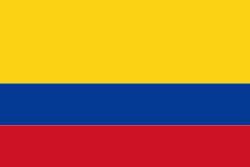Rionegro
 |
 |
The territory was first mentioned in 1541 by the Spanish Lieutenant Álvaro de Mendoza. When the Field Marshal Jorge Robledo took possession of the Valley of Aburrá, he was commissioned by Alvaro de Mendoza. According to Fray Pedro Simón, Robledo was the first Iberian man who discovered the Valley of San Nicolás on 2 September 1541.
Don Juan Daza, a Spaniard of illustrious lineage, took possession of the lands sometime later, and on 8 November 1581, in agreement with the rituals of the laws of Indias, nailed his sword in the ground marking it as an inhabited place and began constructing a farm.
Immigration to Rionegro came from numerous regions of the country, including from the same provincial capital of the time, Santa Fe de Antioquia and the original ranch grew into a village and then a town in the first half of the 17th century. The chapel, Concatedral de San Nicolás el Magno, consecrated to Saint Nicholas was built as early as 1642, another reason why the territory reached a greater degree of independence for religious reasons. Yet, for most part of the 18th century, Rionegro was isolated by the jungle and mountains, and its chapel being only a humble one made of straw and bahareque. In 1783, Rionegro had enough population to become like a municipality, resulting in becoming the City of Santiago de Arma de Rionegro in 1786, with administrative powers under certification of King Carlos III, issued in the Palace of San Idelfonso on 25 September 1786. After this event, its isolation decreased, resulting in the visit of the obisp of Popayan in 1793. After seeing the bad state and rusticity of the churh of the town, the obisp ordered to be demolished and a new one was built, its inaguration taking place in 1803. Rionegro became an important town, and a new distribution of lands was made (resulting in the colonization of the south of the region).
Rionegro grew in the 19th century and was an important center during the end of the Spanish colony, and in the early years of Independence. The city then rivaled Santa Fe de Antioquia to compete for the capital of Antioquia, until the city of Medellín grew prominently and far exceeded the growth of these cities.
Map - Rionegro
Map
Country - Colombia
Currency / Language
| ISO | Currency | Symbol | Significant figures |
|---|---|---|---|
| COP | Colombian peso | $ | 2 |
| ISO | Language |
|---|---|
| ES | Spanish language |


















